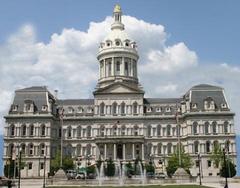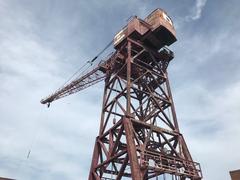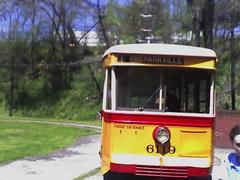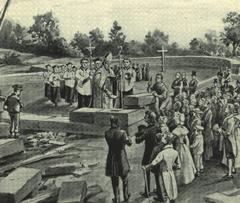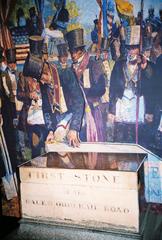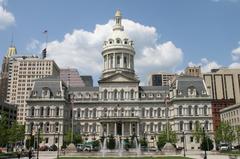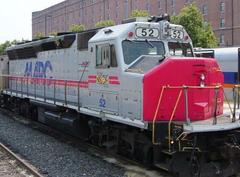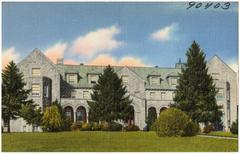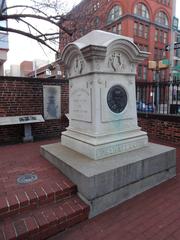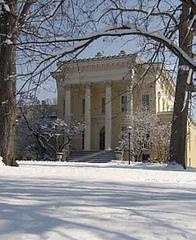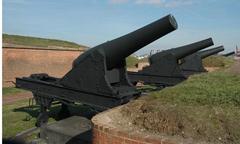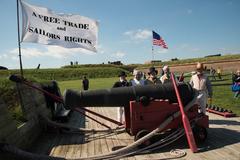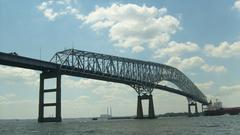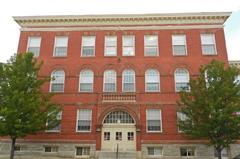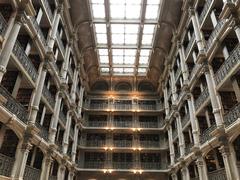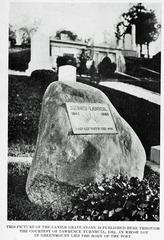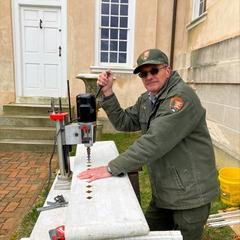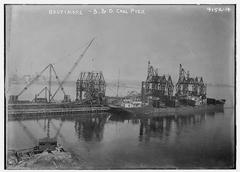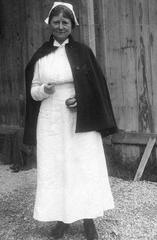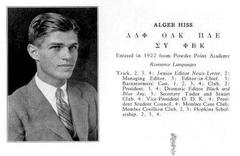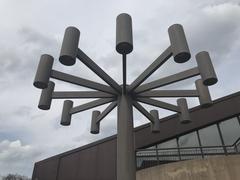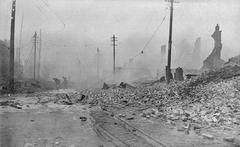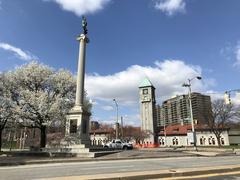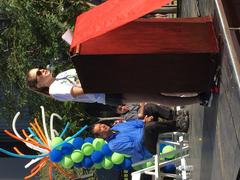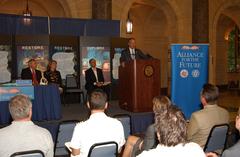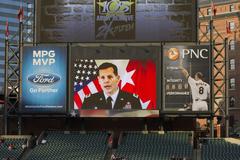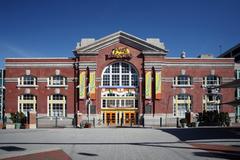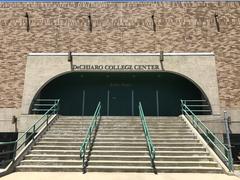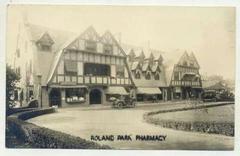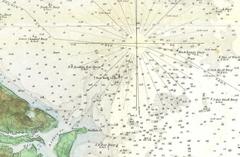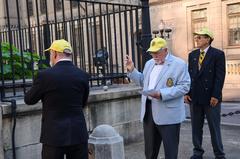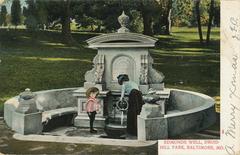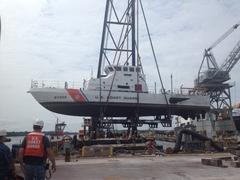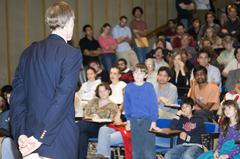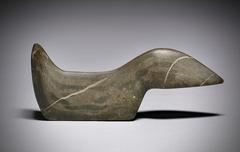National Slavic Museum Baltimore: Visiting Hours, Tickets, and Complete Guide
Date: 04/07/2025
Introduction
Baltimore’s diverse history as a major American port city is reflected in its vibrant immigrant communities, among which Slavic groups have played a significant and lasting role. The National Slavic Museum, situated in the city’s historic neighborhoods, serves as an essential institution dedicated to preserving, celebrating, and sharing the heritage of Slavic peoples who helped shape Baltimore’s cultural, social, and economic landscape. Established in 2012 by local leaders and descendants of Slavic immigrants, the museum chronicles the journeys, traditions, and legacies of Poles, Czechs, Slovaks, Ukrainians, Russians, Belarusians, Bulgarians, and many other groups from Central and Eastern Europe (National Slavic Museum - Official Site, Wikipedia: National Slavic Museum).
Through immersive exhibitions, educational programs, and community events, the museum offers visitors an in-depth exploration of Baltimore’s Slavic immigrant experience. The collections include folk art, traditional costumes, religious artifacts, photographs, and personal memorabilia, all of which narrate powerful stories of adaptation and cultural preservation. The National Slavic Museum is accessible and welcoming, making it an ideal destination for families, history enthusiasts, and cultural explorers. Its proximity to other Baltimore historical sites enables visitors to gain a broader appreciation for the city’s rich immigrant and industrial past (whichmuseum.com, Visit Baltimore).
Table of Contents
- Introduction
- Early Waves of Slavic Immigration to Baltimore
- Cultural and Social Institutions
- Economic Contributions and Labor
- Neighborhoods and Demographic Changes
- Preservation and Celebration of Slavic Heritage
- Practical Visitor Information: Hours, Tickets, and Accessibility
- Highlights of the Museum’s Collection
- Educational and Community Programs
- Nearby Baltimore Historical Sites
- Frequently Asked Questions (FAQ)
- Conclusion
- References
Early Waves of Slavic Immigration to Baltimore
Polish Community
The Polish community was among the first and most influential Slavic groups in Baltimore. Arriving as early as 1868, many Poles were escaping political turmoil and searching for new economic opportunities. They settled primarily in neighborhoods like Fell’s Point, forming a vibrant enclave known as “Little Poland.” Poles worked as stevedores, in canneries, and in other labor-intensive jobs, establishing churches, social clubs, and businesses that defined their community (Wikipedia: History of Poles in Baltimore, The New East Archive).
Czech and Slovak Communities
Czech immigrants began arriving around 1850, and by 1870, their numbers had grown significantly. The city’s Czech community centered in Ward 7 and contributed to the establishment of churches, schools, and social organizations. By 2000, nearly 18,000 people of Czech or Slovak ancestry lived in the Baltimore metropolitan area (Wikipedia: History of Czechs in Baltimore).
Ukrainian and Carpatho-Rusyn Influence
Ukrainians and Carpatho-Rusyns established their own churches and community centers in the late 19th century. St. Michael the Archangel Ukrainian Catholic Church, founded in 1893, became a focal point for Ukrainian immigrants. Other Ukrainian congregations and cultural organizations followed, leaving a lasting imprint on the city (Preservation Maryland).
Russian, Belarusian, Bulgarian, and Other Slavic Groups
Throughout the 20th century, Russians, Belarusians, Bulgarians, Croatians, Serbians, Slovaks, Slovenes, and Lemkos added to Baltimore’s multicultural fabric. They formed churches, social clubs, and participated in pan-Slavic events, contributing to the city’s vibrant cultural scene (The New East Archive).
Cultural and Social Institutions
Slavic immigrants created strong networks through religious, social, and cultural institutions. Churches such as St. Michael the Archangel Ukrainian Catholic and various Polish and Czech parishes served as anchors for their communities (Preservation Maryland). Fraternal organizations and cultural clubs promoted traditions, organized festivals, and aided new arrivals, leaving a legacy visible in the city’s social fabric (The New East Archive).
Economic Contributions and Labor
Baltimore’s industrial growth was fueled in part by Slavic immigrants who worked in the port, factories, and canneries. The demand for labor after the abolition of slavery drew many from Central and Eastern Europe to the city and surrounding areas (Wikipedia: History of Poles in Baltimore, localhistories.org). Their economic contributions helped Baltimore remain resilient during periods like the Great Depression.
Neighborhoods and Demographic Changes
Slavic immigrants settled in neighborhoods such as Fell’s Point, Highlandtown, Canton, and Ward 7. Over time, as families assimilated and moved to other areas, the distinct ethnic enclaves began to fade, but the influence of Slavic heritage remains visible in architecture, local businesses, and community organizations (The New East Archive).
Preservation and Celebration of Slavic Heritage
The founding of the National Slavic Museum in 2012 marked a significant step in preserving and promoting Slavic culture in Baltimore. The museum’s mission is to educate the public, foster cultural exchange, and serve as a resource for genealogical and historical research (Wikipedia: National Slavic Museum). Its events and exhibitions ensure that the stories and traditions of Baltimore’s Slavic communities continue to inspire new generations (whichmuseum.com).
Practical Visitor Information: Hours, Tickets, and Accessibility
Address: 864 South Broadway, Baltimore, MD 21231
Visiting Hours:
- Tuesday to Saturday: 11:00 AM – 5:00 PM
- Closed Sundays and Mondays
(Some sources also list Saturday–Sunday, 12:00 PM – 5:00 PM; check the official website for current hours.)
Admission:
- General: $10
- Seniors, students, military: $7
- Children under 12: Free
(Admission is sometimes free with donations encouraged during special events or community days.)
Accessibility:
- The museum is fully wheelchair accessible, with ramps, elevators, and accessible restrooms.
Guided Tours:
- Available by appointment. Contact the museum via their official website to schedule.
Highlights of the Museum’s Collection
- Folk Costumes: Polish, Ukrainian, Russian, Slovak, and Czech traditional attire.
- Religious Artifacts: Eastern Orthodox icons, Catholic vestments, hand-painted Easter eggs (pysanky).
- Documents: Ship manifests, immigration papers, family letters, and photographs.
- Household Items: Pottery, wooden utensils, musical instruments like accordions and balalaikas.
- Interactive Exhibits: Digital archives, hands-on craft workshops, audio stations with traditional music.
Rotating exhibitions explore themes such as “Slavic Churches in Baltimore,” “Slavic Women in America,” and “Slavic Culinary Traditions.” The museum also collaborates with other institutions for traveling exhibitions and special events.
Educational and Community Programs
- School Tours: Curriculum-aligned tours for local schools.
- Genealogy Workshops: Research using church records and oral histories.
- Language Classes: Polish, Russian, and Ukrainian.
- Festivals: Annual Slavic Heritage Festival, Easter and Christmas celebrations, and cultural performances.
The museum also partners with local universities and community organizations to provide lectures, film screenings, and public forums (Visit Baltimore).
Nearby Baltimore Historical Sites
Complement your visit with other notable attractions:
- Fell’s Point Historic District: Waterfront neighborhood with colonial-era architecture.
- Baltimore Museum of Industry: Exhibits on the city’s industrial history.
- Star-Spangled Banner Flag House: Site of the creation of the American national anthem.
- Highlandtown Arts District: Vibrant area known for its galleries and cultural festivals.
For dining, try local establishments offering Slavic cuisine, such as Ze Mean Bean Café in nearby Fell’s Point.
Frequently Asked Questions (FAQ)
Q: What are the National Slavic Museum’s visiting hours?
A: Typically Tuesday–Saturday, 11:00 AM to 5:00 PM. Confirm details on the official website.
Q: How much is admission?
A: General admission is $10, with discounts for seniors, students, military, and free entry for children under 12. Some events offer free admission with a suggested donation.
Q: Is the museum wheelchair accessible?
A: Yes, the building is fully accessible.
Q: Are guided tours available?
A: Yes, by appointment.
Q: Is parking available?
A: Street parking is available nearby; the museum is also accessible by public transportation.
Q: Can I take photographs?
A: Non-flash photography is allowed in most areas.
Conclusion
The National Slavic Museum stands as a testament to the enduring legacy of Slavic immigrants in Baltimore. Through its engaging exhibits, educational programs, and cultural events, the museum preserves the stories, traditions, and contributions of diverse Slavic communities. Its accessible location, visitor-friendly policies, and vibrant programming make it a must-visit for anyone interested in Baltimore’s multicultural history.
For the latest updates on hours, ticketing, events, and special exhibitions, visit the National Slavic Museum official website. Download the Audiala app for enhanced self-guided tours and cultural insights. Stay connected by following the museum on social media and exploring related Baltimore historical sites to enrich your experience.
For optimal planning, include images with alt tags such as “National Slavic Museum Baltimore visiting hours” and “Slavic heritage exhibits in Baltimore.” For additional perspectives, review visitor experiences on platforms like Reddit.
References
- National Slavic Museum - Official Site
- Wikipedia: National Slavic Museum
- Baltimore Magazine
- localhistories.org
- whichmuseum.com
- Visit Baltimore
- Preservation Maryland
- The New East Archive
- Reddit Discussion

